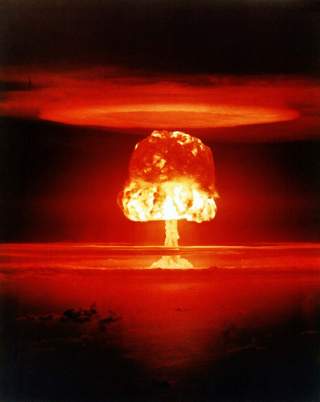Senior Congressional Dems Urge Obama to Adopt No First Use
“We encourage you to adopt options such as a no-first use of nuclear weapons declaratory policy and elimination of launch on warning nuclear posture.”
Senior Democratic members of the U.S. House of Representatives are urging President Barack Obama to radically reshape America’s nuclear posture. Among the suggestions is to declare unequivocally that the United States—which is the only nation ever to have used an atomic bomb during wartime—adopt a “no first use” policy and to eliminate America’s launch on warning hair-trigger alert for its nuclear arsenal.
“We encourage you to adopt options such as a no-first use of nuclear weapons declaratory policy and elimination of launch on warning nuclear posture,” reads a July 20, 2016, letter addressed to President Obama from five senior Democratic representatives that was obtained by The National Interest. “Both steps that could avoid an unintentional or hasty start to unprecedented and catastrophic nuclear devastation.”
The letter’s signatories include Rep. Adam Smith, ranking member of the House Armed Services Committee (HASC), Rep. Loretta Sanchez, ranking member of the HASC Tactical Air and Land Forces subcommittee, Rep. Jackie Speier, ranking member of the HASC Oversight and Investigations subcommittee, Rep. Chris Van Hollen, ranking member of the House Budget Committee and Rep. Marcy Kaptur, ranking member of the House Appropriations Committee’s Energy and Water subcommittee.
The United States has traditionally maintained a policy of strategic ambiguity for the use of nuclear weapons. During the Cold War, the Pentagon hoped to offset the conventional military superiority of the Warsaw Pact with tactical nuclear weapons should the conflict ever turn hot. The Soviet Union, conversely, maintained an explicit “no first use” policy that then Soviet premier Leonid Brezhnev announced at the United Nations in June 1982. The current Russian Federation government renounced the “no first use” pledge in 1993 with its so-called de-escalation doctrine.
Meanwhile, it is not clear if the United States does rely on a launch on warning posture for its nuclear weapons. A Clinton Administration presidential decision directive (PDD) would suggest that the United States abandoned the launch on warning posture in 1997. “In this PDD we direct our military forces to continue to posture themselves in such a way as to not rely on launch on warning—to be able to absorb a nuclear strike and still have enough force surviving to constitute credible deterrence,” Robert Bell, then the senior director for defense policy and arms control at the National Security Council, told the Arms Control Association in 1997.
The Democratic congressmen also called on Obama to scale back his nuclear modernization plans—which the members estimated would cost more than $1 trillion over the next 30 years. The Congressmen expressed their concern that Obama’s modernization plan could open the doorway to developing and building new nuclear weapons at the expense of America’s conventional military forces. Moreover, the senior Democratic members called on the administration to reduce the United States’ stockpile of reserve warheads, which currently total about 5000 weapons.
“We should continue to reduce the number of warheads we hold in reserve, since the United States does not need to retain nearly 5000 nuclear weapons in order to possess a strong, reliable and effective nuclear deterrent,” reads the letter. “We urge you to consider reshaping this plan to overhaul the nuclear enterprise.”
While eliminating launch-on-warning, declaring a no first use policy and reducing the reserve stockpile has many proponents, it has not met with universal acclaim even from within the Obama White House.
Dave Majumdar is the defense editor of The National Interest. You can follow him on Twitter @DaveMajumdar.

